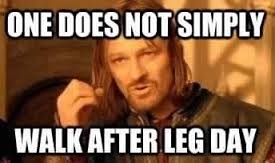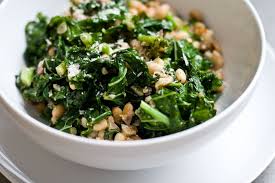Reducing Delayed onset muscle soreness
Have you ever had a post-workout day when you were so sore, that squatting down to pick up something was really uncomfortable? Or even very painful? Well this picture might be funny but if you have been there you know its not at all fun!
The experts call that “Delayed onset muscle soreness” or “DOMS”. You may have also heard it referred to as “muscle fever”.
This soreness is felt most strongly 24 to 72 hours after the exercise. It is thought to be caused by eccentric (lengthening) exercise, which causes microtrauma or micro-tears to the muscle fibers.
Many fitness enthusiasts will push through and accept that DOMS is unavoidable, others may feel that skipping workouts is the best route.
If you choose to get and stay fit, DOMS will be a part of your life. So, rather than suffer through the worst of it, I have put together tips that may help to ease the discomfort of DOMS.
Pre-workout
Eat Well, Eat Clean: Your food choices matter more than you might have thought. Foods that are known for their anti-inflammatory properties are the way to go. Experts tell us that this is a key component to repairing, rebuilding and protecting muscles. These foods work to reduce inflammation similar to what you might expect from ibuprofen or other NSAIDS except, naturally without the side effects of NSAIDS.
Anti-inflammatory foods include salmon, beans, sweet potatoes, avocados, nuts, seeds and dark fruits and vegetables to name a few. As well as herbs including turmeric, rosemary and marjoram and ginger. These are just a few, there are so many more. Even the pickiest eater can find a slew of choices for a pre-workout meal.
For myself, I cannot eat a lot before a workout but I do aim for quality including a morning smoothie consisting of cantaloupe, mango, water, spinach and a few more goodies (recipe here)
Drink up: Hydrate Hydrate Hydrate! The more water you drink, before, during and after exercise, the more efficiently your body works.
Stretching– A proper warmup and cool down are paramount for reducing post-workout pain and to help prevent injury. During your warm up I suggest light cardio to begin, such as jumping jacks, running in place, brisk walking or even marching, especially if you are new to the fitness game. This gets the heart pumping and warms up the muscle groups. Follow this with simple stretches prior to your weight training. If you need specific how to’s -I am available to help.
What I do-I get bored quickly and do not have a ton of time so I usually switch my warm ups back and forth between 1.5-2 miles on the treadmill with a light run/fast paced walk, and on another day I’ll do several rounds of jumping jacks or jump rope. Then I stretch specific muscle groups I plan on working along with shoulders and neck since those are my chronic problem areas.
During your workout
Drink up: Hydrate Hydrate Hydrate-yes during workouts too! This is an invaluable tool for so many reasons
Find your edge: I tell my students find your “edge” the place where you know if you push further, things could get dicey/unsafe/ in the injury zone, and then work just to this side of it. In other words, it is far better for prevention of injury and in limiting the after soreness, if you take it slow, track your progress and build slowly. Our bodies are designed to adapt, give your body the time to adjust.
Hello, your body is calling: Have you ever done something and afterward you thought, If I had just listened to my “intuition” I would have prevented this back injury or hamstring pull. The good news is you were right. The bad news many times, is it was too late, now you are injured, now your workouts are back to square 1. When we train hard it is expected that pain will follow But that old saying “no pain no gain” is BS, period! If it hurts Stop! Soreness is one thing but pain is your brilliant body telling you to slow it down and reassess, take heed. Consider modifications or shifts that will better accommodate your body’s needs now.
Post workout
Hold on- you aren’t done yet. Its time to stretch and yes, you guessed it Hydrate. Stretch it out-A good post stretch encompasses all the large muscle groups and specific ones you worked. Don’t forget even your abs. benefit from a nice post stretch.
Grab a good meal with a clean source of lean protein as well as greens or fruit. As for how much protein, that is a big subject. After researching a slew of sources, I settled here- The “Journal of the International Society of Sports Nutrition” recommends eating a slightly higher protein intake, as this can improve adaptations to intense training. The Journal suggests that an intake closer to 1.4 to 2 grams per kilogram, or 0.64 to 0.91 grams per pound may be more suitable for both men and women. At this amount, a 120-pound female would require 77 to 109 grams per day, while a 150-pound female would need 96 to 137 grams. Splitting your daily protein evenly between all your meals is still a wise idea, even at a higher intake.” You are an individual, with needs based on your overall health and any specific medical issues you may have. Please check with your healthcare provider to get your needs dialed in.
Jump in the bath: How about a nice warm soak with Epsom salts, a bit of lavender, chamomile or marjoram oil will assist in reducing DOMS and added bonus helps to detoxify your body. Don’t feel like housing all the different ingredients? Checkout my Muscle Bliss oils and Bath Salts.
By now, I doubt you would forget the water right? You will recover so much quicker if you hydrate perhaps avoid a wicked headache and a vicious craving to down an enormous plate of food.
Rest-There is no substitute and your body does its best recovery work while you are chillin.
Let’s wrap up with a review:
Track your progress
Listen to your body
Eat Well
Hydrate
Soak
Rest
Repeat
Call me
In closing, the suggestions here are the result of collective opinions of professionals. You are likely to find a whole host of others who say nothing works and well, I cannot speak for everyone. I only know what I know and I hope that this article is helpful for you. One thing everyone seems to agree upon is that “delayed onset muscle soreness” or “DOMS” is inevitable whether you are working out in the gym or pulling weeds for hours on end. To some to degree we just have to deal with it.
Sources:
http://whfoods.org/genpage.php?tname=foodspice&dbid=17
http://www.drweil.com/drw/u/ART02995/Dr-Weil-Anti-Inflammatory-Food-Pyramid.html
http://www.livestrong.com/article/530256-how-much-protein-should-a-female-take-post-workout/
http://www.cnpp.usda.gov/FGP
Disclaimer: All health content on MySageGourmet.com and by Carol Takakura, is provided for general information only, and should not be treated as a substitute for the medical advice of your own doctor or any other health care professional. If you have any concerns about your general health, you should contact your local health care provider.


